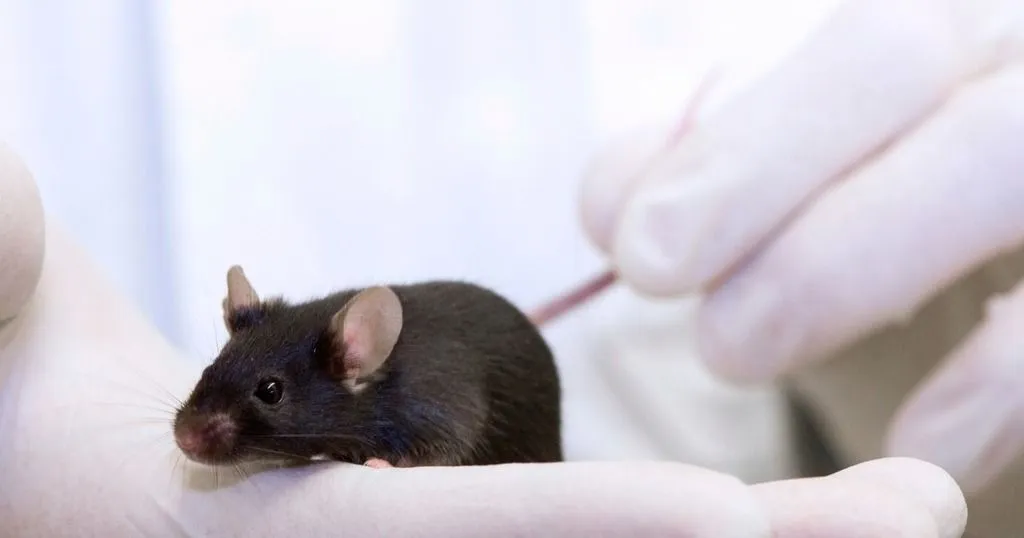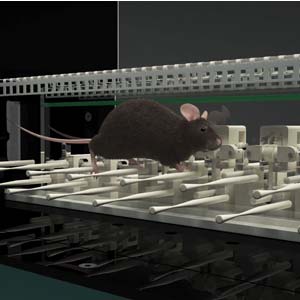Testing motor coordination in a mouse model with muscular dystrophy
Muscular Dystrophy is a broad group of diseases recognized by the loss of muscle mass and strenght. Researchers tried to discover if gene therapy strategies can help with reducing symptoms.
Posted by
Published on
Wed 19 Feb. 2020
Topics
| ErasmusLadder | Gait | Motor Performance |
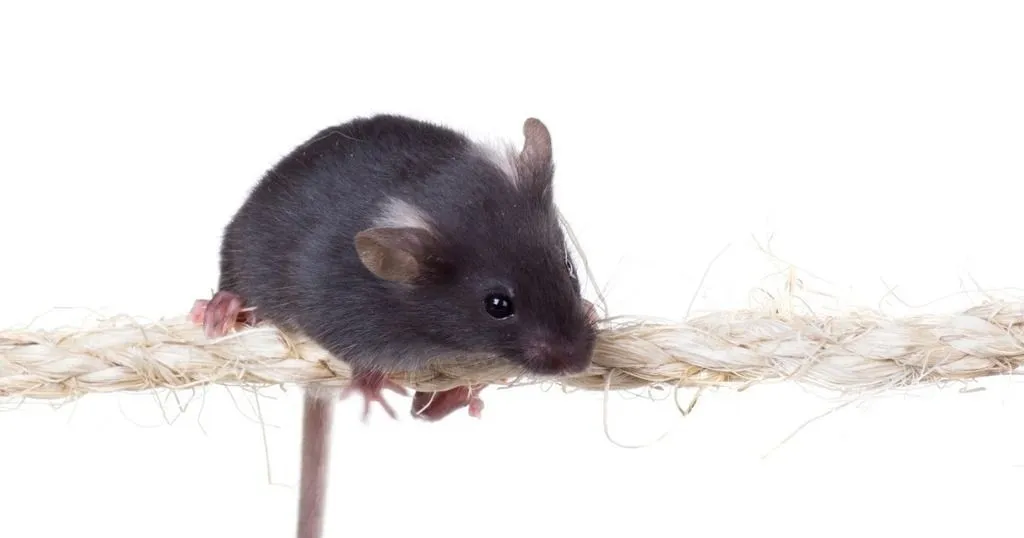
Muscular dystrophy is a group of inherited diseases, identified with a progressive loss of muscle mass and a consequent loss of muscle strength and degeneration.
There is currently no cure for this disease. The person’s quality of life improves with different types of therapy and drug treatment, but there is no way to prevent or reverse muscular dystrophy.
Depending on the type and severity, the effects of this disease can be mild or fatal and the progression can differ between patients.
One of the more severe types of muscular dystrophy is congenital muscular dystrophy with megaconial myopathy (MDCMC) which is pathologically recognized by abnormally enlarged mitochondria. There are at least 48 reported cases of MDCMC worldwide. This disease appears in early childhood, and may not only be restricted to muscle degeneration, but can also affect the brain and other organ systems.
Choline kinase beta gene in MDCMC
During the investigation of MDCMC, researchers observed reduced choline kinase activity, indicating that loss of function mutations in choline kinase beta (Chkb) gene causes this disease. This gene has an important role in normal physiological and mitochondrial function as well as muscle development.
Furthermore, Chkb gene encodes the choline kinase β that catalyzes the first enzymatic step in a biosynthetic pathway for phosphatidylcholine, one of four major biolipids.
What happens with upregulating Chkb gene?
Ambreen A. Sayed-Zahid and her colleagues tried to discover if gene therapy strategies help with reducing severity of MDCMC symptoms, and help with restoration of muscle strength and coordination.
To answer their question, researchers used mice models with rostrocaudal muscular dystrophy (rmd) accompanied by removed Chkb gene, resulting in an MDCMC-like phenotype.
For testing pre-disease upregulation of Chkb gene, an engineered, muscle-specific (skeletal and cardiac muscles) transgenic mouse with rostrocaudal muscular dystrophy (Tg-rmd mouse) was used.
The researchers performed four different behavioral tests to discover if their transgene rescued motor performance: the open field, rotarod, grip strength, and the ErasmusLadder test.
Motor performance after upregulation of the Chkb gene
Assessing fine motor performance in mice
The researchers used the fully automated ErasmusLadder from Noldus IT to test fine motor coordination. This instantaneously registers and analyzes the walking pattern of mice, as all rungs are equipped with pressure sensors.
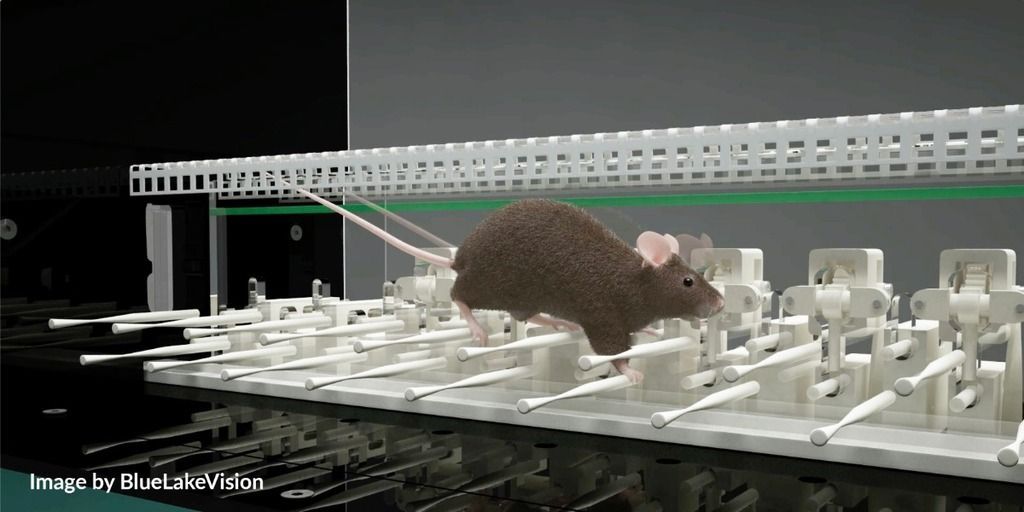
Researchers focused on evaluating how many missteps and back steps control and Tg-rmd mice models will do while testing. A misstep is counted, when the mouse uses a lower rung instead of the higher one. Greater percentage of missteps and back steps would mean a greater motor and coordination deficit. Each mouse was tested for 4 days in a row and no perturbation or sound stimulus was used during the tests.
The results indicate that there was no significant difference in the percentage of back steps or missteps between the control and Tg-rmd group.
Assessing basic locomotion and grip strength in mice
Basic locomotor function was tested with the Open field test, in which the Tg-rmd mice showed similar vertical activity and travelled distance as their age- and sex-matched wild-type littermates in the control group. This suggests normal locomotion and rearing ability.
Results from the test of the Rotarod showed, that motor endurance and performance levels of the Tg-rmd mice equal the endurance and performance levels of the control mice.
Also, the grip strength of forepaws and all paws was not different from the Tg-rmd mice and their age- and sex-matched littermate controls.
Potential therapy for MDCMC
The researchers came to the conclusion that introduction of a muscle-specific Chkb transgene completely saved motor functionalities in the rmd mice. Replacement of the Chkb gene could for this reason serve as a potential therapy for MDCMC patients.
Besides, researchers also tested post-disease therapy strategy with intramuscular injections of adeno-associated viral vectors expressing either Chka or Chkb genes in rmd mice. They concluded that upregulating Chka could also be implemented as a potential therapy.
References
Sayed-Zahid, A. A., Sher, R. B., Sukoff Rizzo, S. J., Anderson, L. C., Patenaude K. E. and Cox, G. A. (2019). Functional rescue in a mouse model of congenital muscular dystrophy with megaconial myopathy. Human Molecular Genetics, 28, 16.
Related Posts

Extracellular vesicles from umbilical cords improve traumatic spinal cord injury
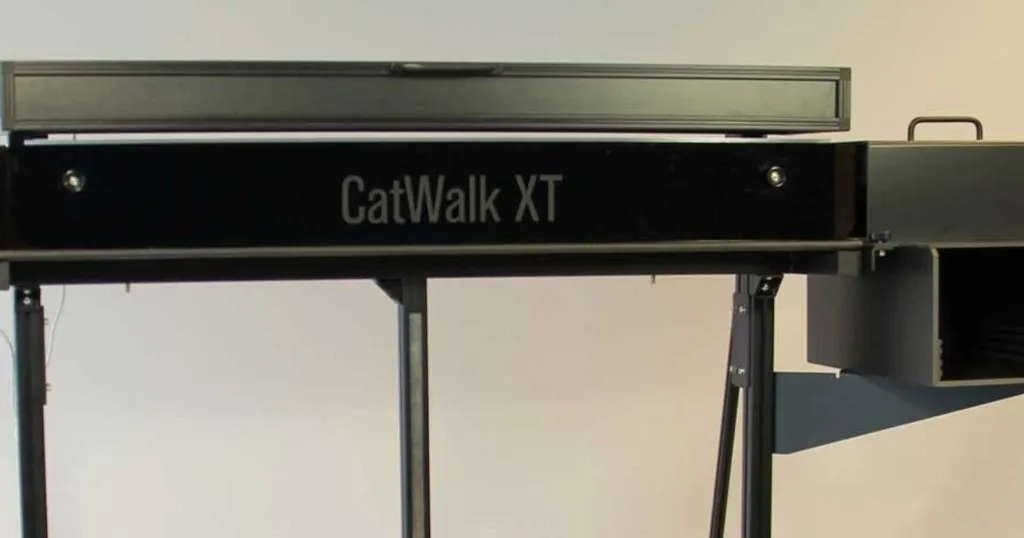
Gait analysis at the PSDL using CatWalk
